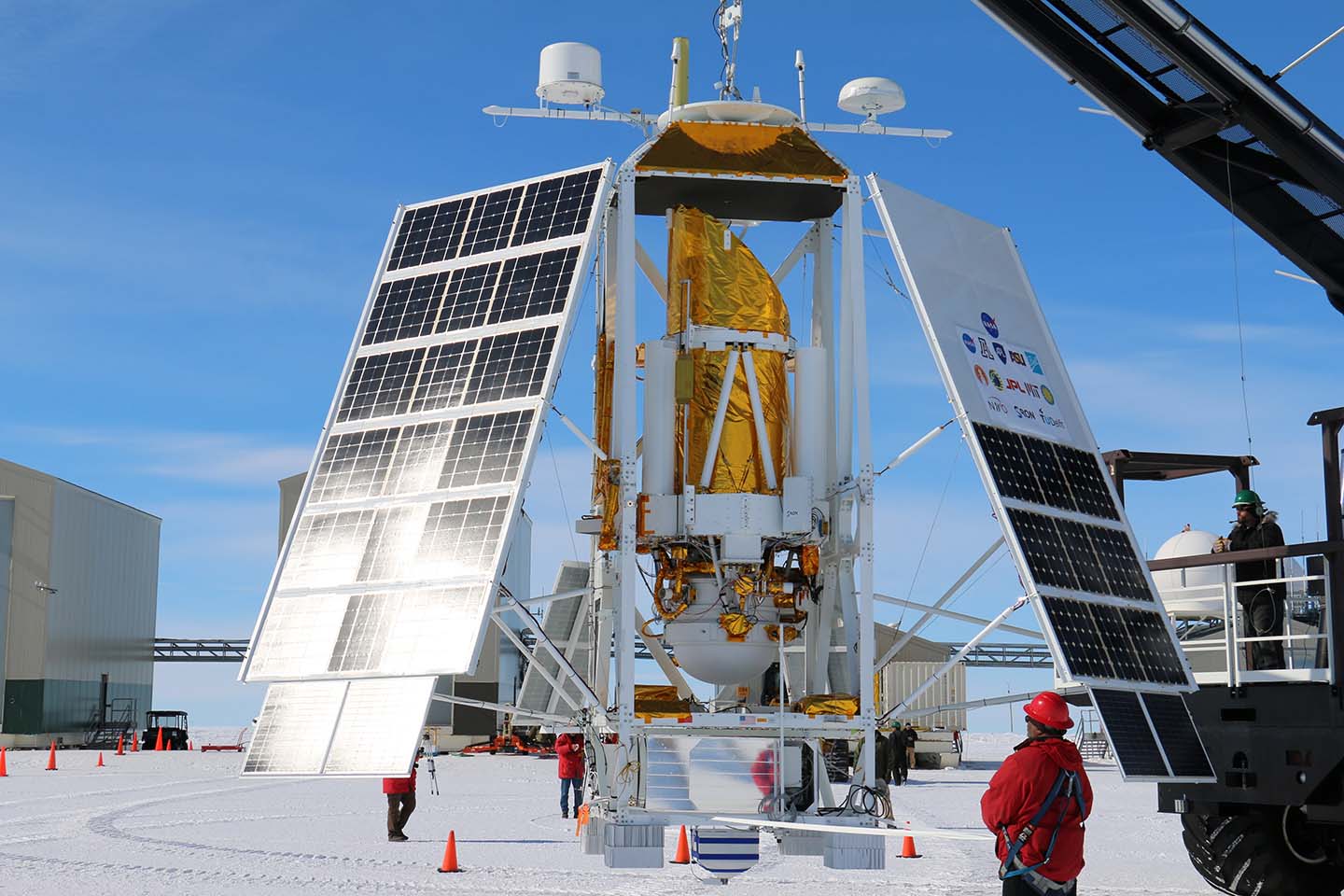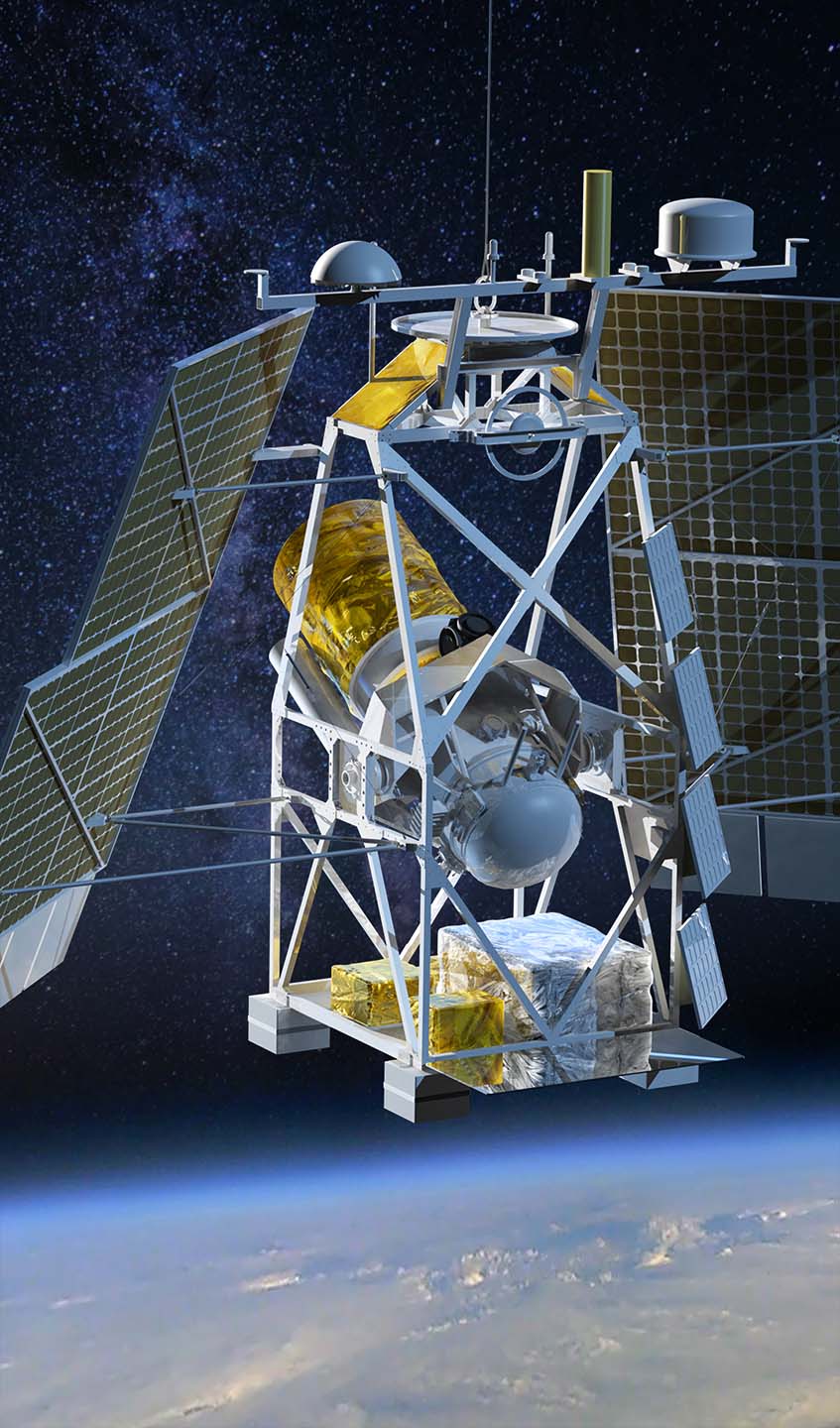Press Release
NASA Selects APL-Managed Balloon Mission to Untangle the Complexities of the Interstellar Medium
Wed, 03/29/2017 - 14:41
NASA has selected an Ultralong-Duration Balloon (ULDB) science mission that will measure emissions from the interstellar medium, which is the cosmic material found between stars.
The Galactic/Extragalactic ULDB Spectroscopic Terahertz Observatory (GUSTO) mission, led by principal investigator Christopher Walker of the University of Arizona, will consist of a telescope with carbon, oxygen and nitrogen emission line detectors carried to a height of approximately 110,000 feet on a gondola built by the Johns Hopkins University Applied Physics Laboratory (APL). APL, located in Laurel, Maryland, will manage the project and also handle GUSTO mission operations.
The unique combination of data from the telescope and detectors will provide the information needed for the GUSTO team to untangle the complexities of the interstellar medium, and map out large sections of the plane of our Milky Way galaxy and the nearby galaxy known as the Large Magellanic Cloud.
“GUSTO will provide the first complete study of all phases of the stellar life cycle, from the formation of molecular clouds, through star birth and evolution, to the formation of gas clouds and the re-initiation of the cycle,” said Paul Hertz, astrophysics division director in NASA’s Science Mission Directorate in Washington. “NASA has a great history of launching observatories in the Astrophysics Explorers Program with new and unique observational capabilities. GUSTO continues that tradition.”
The completed GUSTO gondola, which will weigh about two tons, will be carried high above Earth’s atmosphere (roughly 21 miles) and the water vapor that can prevent ground-based telescopes from making these kinds of observations. The mission is targeted for launch in 2021 from McMurdo, Antarctica, and is expected to stay in the air between 100 and 170 days, depending on weather conditions.
“The GUSTO gondola is a proven, highly capable and adaptable platform that has successfully delivered high-quality planetary and interstellar science,” said Dewey Adams, GUSTO project manager at APL. “All of the GUSTO teams are excited about the great science that this low-cost mission can deliver.” Both Adams and APL’s Pietro Bernasconi, the mission systems engineer and mission manager, have considerable expertise in balloon-based scientific missions.
By focusing on measuring emissions from the interstellar medium, GUSTO will help scientists determine the life cycle of interstellar gas in our Milky Way galaxy, witness the formation and destruction of star-forming clouds, and understand the dynamics and gas flow in the vicinity of the center of our galaxy. Both Adams and APL’s Pietro Bernasconi, the mission systems engineer and mission manager, have considerable expertise in balloon-based scientific missions, including 2014’s Balloon Observation Platform for Planetary Science (BOPPS) mission.
“If we want to understand where we came from, we have to understand the interstellar medium,” said the University of Arizona’s Walker, GUSTO principal investigator, “because 4.6 billion years ago, we were interstellar medium.”

